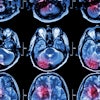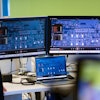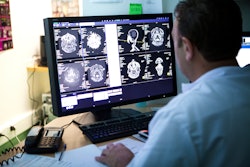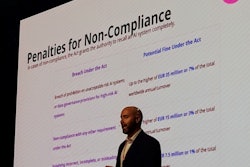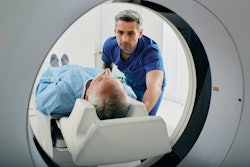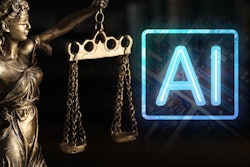Frequent AI use is associated with an increased risk of radiologist burnout, particularly among those with heavy workloads and low AI acceptance, suggests a study published on 22 November in JAMA Network Open.
The finding is based on a nationwide survey in China, and although more research is needed to explore the issue, the study highlights the urgent need to prioritize coordination strategies between radiologists and AI tools, noted lead author Hui Liu, PhD, of the Chinese Academy of Medical Sciences & Peking Union Medical College in Beijing, and colleagues.
“The excitement and expectations surrounding technological advances should not overshadow the challenges that remain before AI can be routinely applied in radiology practice,” the group wrote.
Radiologists are in short supply worldwide and are overwhelmed by rapidly growing healthcare needs and medical imaging data, the authors explained. In China, the annual growth rate of medical imaging data is 7.5 times that of radiologists, they wrote.
To address this imbalance in supply and demand, policymakers and researchers are planning or have implemented AI strategies, yet whether AI can actually alleviate the workload of radiologists remains unclear. Moreover, few studies have investigated the association between AI use and radiologist burnout, the researchers added.
To address this knowledge gap, the group conducted a cross-sectional survey of 1,143 hospitals and enrolled one to five radiologists aged 20 to 74 from each, provided they had worked for at least one year before the survey.
Burnout was defined by emotional exhaustion (EE) or depersonalization (according to the Maslach Burnout Inventory) and workload was assessed based on working hours, number of image interpretations, hospital level, device type, and role in the workflow. AI acceptance was determined via a latent class analysis that considered radiologists’ AI-related knowledge, their attitude toward it, confidence, and likelihood of adopting it.
Among 6,726 radiologists included, 35.3% were female and 64.7% were male, with a median age of 41 years; 3,017 were split into an AI group based on their regular or consistent AI use and 3,709 into a non-AI group.
According to the analysis, the weighted prevalence of burnout was significantly higher in the AI group compared with the non-AI group (40.9% vs. 38.6%; p < 0.001). After adjusting for covariates, AI use was significantly associated with increased odds of burnout (odds ratio [OR], 1.2 [with 1 as reference]), primarily driven by its association with emotional exhaustion (OR, 1.21).
The team found associations between the frequency of AI use and burnout (p < 0.001), with the associations more pronounced among radiologists with high workload and lower AI acceptance, the researchers noted.
“We found that AI use was associated with increased odds of burnout among radiologists," the group wrote. "Moreover, joint exposure to AI use alongside either high workload or low AI acceptance was associated with an additional risk of burnout."
The study results underscore the need to reassess the role of AI technology in mitigating radiologist burnout, the researchers suggested. Balancing AI use with an appropriate radiology workforce and maintaining psychological acceptance of AI technology in clinical practice is essential, they wrote.
“The role of AI in alleviating radiologist burnout should be considered cautiously, and longitudinal studies are warranted to further elucidate this association,” the group concluded.
The full study is available here.


